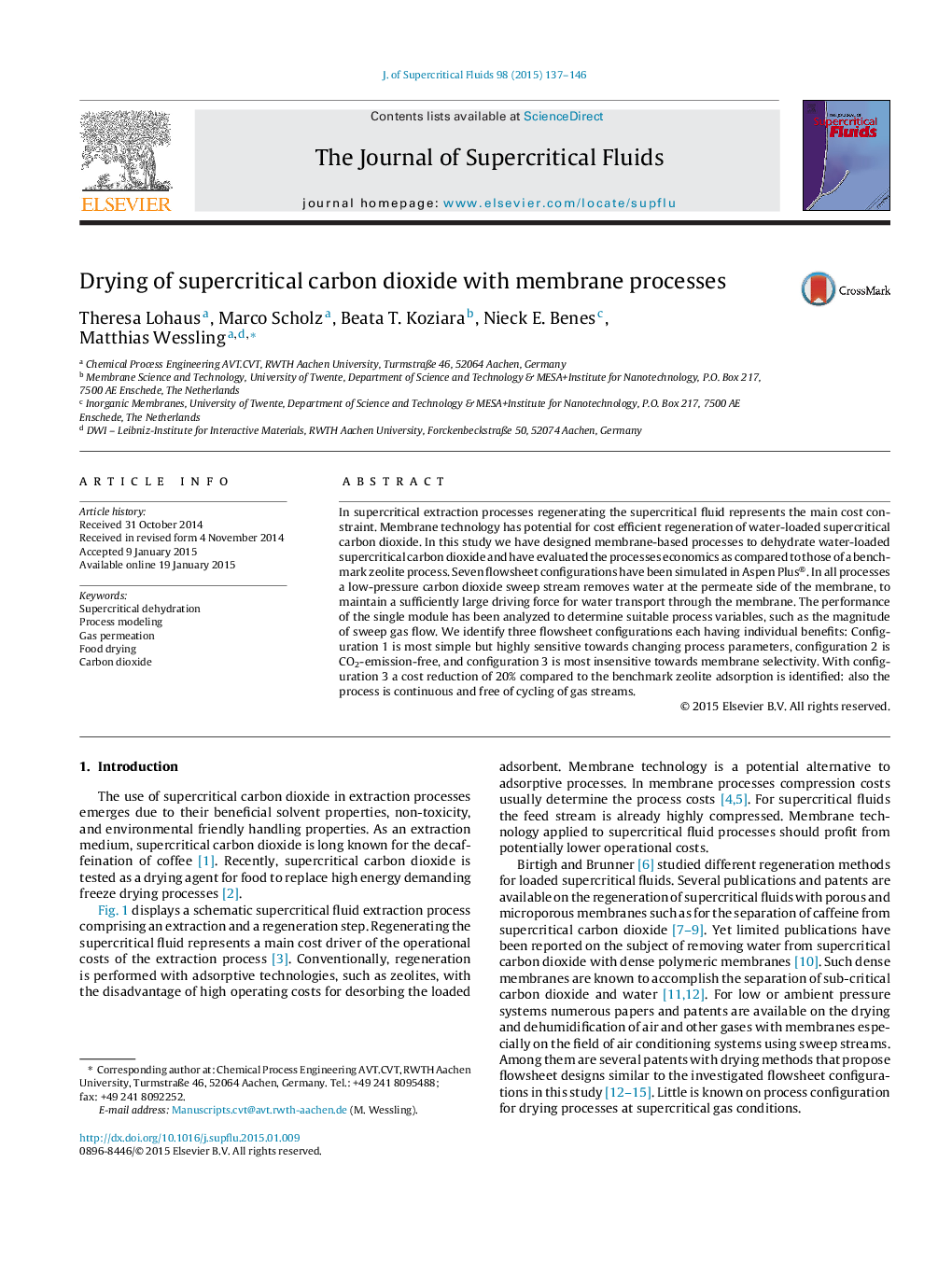| Article ID | Journal | Published Year | Pages | File Type |
|---|---|---|---|---|
| 230325 | The Journal of Supercritical Fluids | 2015 | 10 Pages |
•New membrane processes for supercritical CO2 dehydration developed.•Benchmarking shows benefits for membrane of zeolite adsorption process.•Different processes have particular advantages depending on the boundary conditions.
In supercritical extraction processes regenerating the supercritical fluid represents the main cost constraint. Membrane technology has potential for cost efficient regeneration of water-loaded supercritical carbon dioxide. In this study we have designed membrane-based processes to dehydrate water-loaded supercritical carbon dioxide and have evaluated the processes economics as compared to those of a benchmark zeolite process. Seven flowsheet configurations have been simulated in Aspen Plus®. In all processes a low-pressure carbon dioxide sweep stream removes water at the permeate side of the membrane, to maintain a sufficiently large driving force for water transport through the membrane. The performance of the single module has been analyzed to determine suitable process variables, such as the magnitude of sweep gas flow. We identify three flowsheet configurations each having individual benefits: Configuration 1 is most simple but highly sensitive towards changing process parameters, configuration 2 is CO2-emission-free, and configuration 3 is most insensitive towards membrane selectivity. With configuration 3 a cost reduction of 20% compared to the benchmark zeolite adsorption is identified: also the process is continuous and free of cycling of gas streams.
Graphical abstractFigure optionsDownload full-size imageDownload as PowerPoint slide
